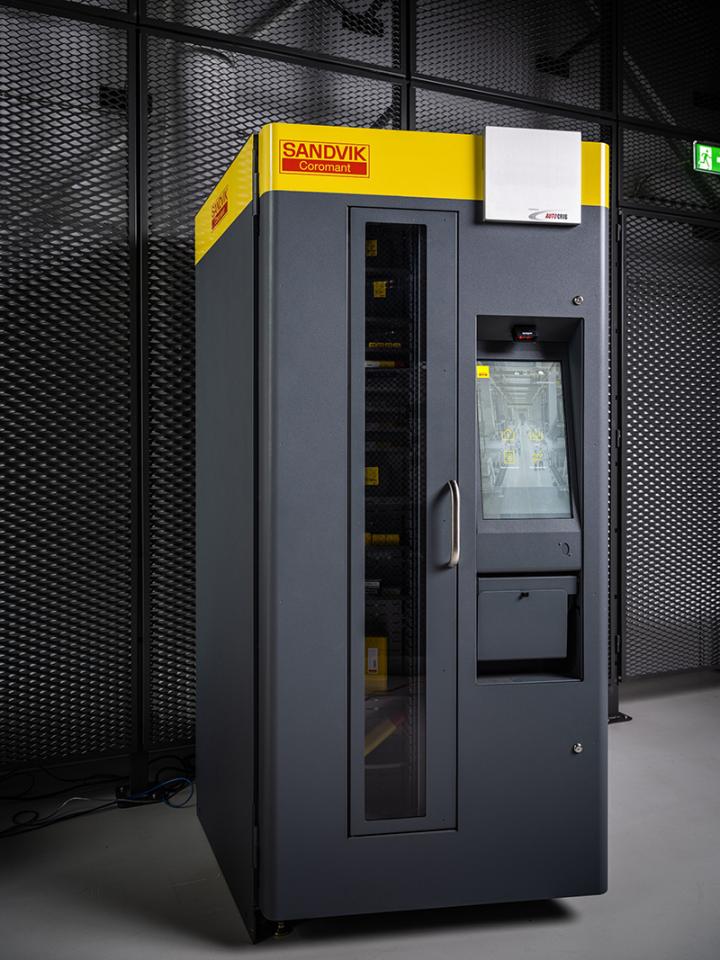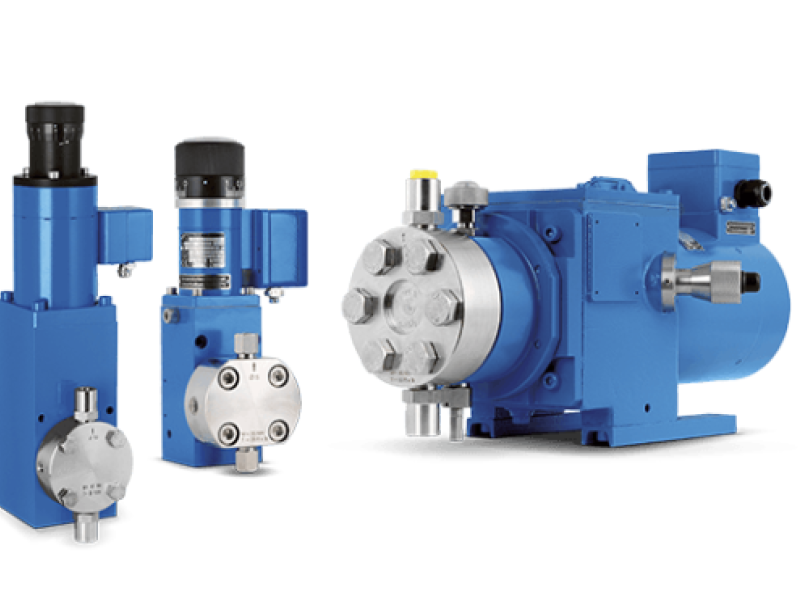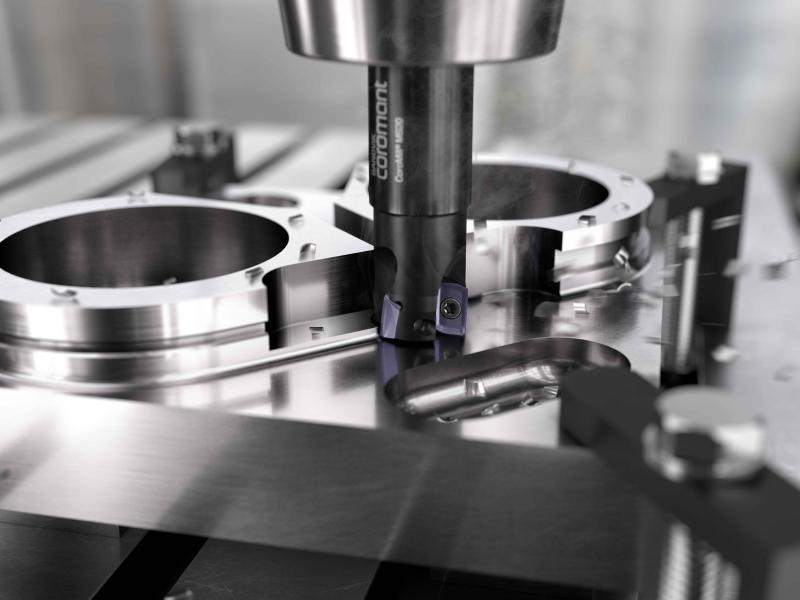Good tool inventory management leads to more profitable, more sustainable manufacturing
The earliest example of a vending machine dates back to the first century, when Greek engineer Hero Alexandria created a machine that accepted a coin before dispensing holy water. At the temples where citizens worshipped, the device ensured people were not taking more than their fair share. While vending machines have since increased in sophistication, their principal remains the same — providing streamlined, instant access to the commodity the user requires. Here, Andreas Nyberg, CoroPlus Tool Supply specialist at Sandvik Coromant, explores how tool vending machine software and hardware can enhance a shop floor’s profitability, productivity and sustainability.
In many manufacturing operations, up to 60% of stock is never used, while around 15% of jobs fall behind schedule due to missing tools. What’s more, operators can spend as much as 20% of their time looking for lost tools. These findings, based on Sandvik Coromant's own research prove one thing: inadequate analysis of tool logistics drives up business costs.
Even in highly competitive and technically advanced facilities, tool inventory issues often go amiss and the true cost of misplaced tools slips under the radar. But could something as simple as a vending machine, first created centuries ago, prove the answer to better tool management?
Less visibility, less productivity
A machine shop, no matter its size, should always be prepared to work quickly and cost-effectively. Machining parts for varying industries, from an ever-growing portfolio of materials, needs a wide range of tools at the ready. Another layer of complexity comes in the form of mass customization, as an increasing number of manufacturers produce unique products at larger scales. Making the right things, at the right time, and getting them where they are needed adds even more pressure on machinists to operate to tighter tolerances and with quick-change tooling and work holding strategies. Having access to the right tools, at the right time, is essential.
Plenty can go awry as a result of poor inventory management. Having little-to-no visibility of the tools on a shop floor and where those tools are located can lead to a facility having too much stock. Alternatively, it could suffer a stockout, when inventory is depleted when a certain tool is needed most. Other unfortunate outcomes include difficulties in measuring tool performance and higher costs for stock management and processing orders. These issues all lead to one, ultimate consequence: machines without the correct tools grind to a halt, and the facility suffers unexpected, but preventable, downtime. And that time means money.
Have too much or too little stock is largely a result of human error. If tools aren’t placed back in their correct cabinets and are left scattered across the shop floor, operators simply won’t know whether or not their tool stock is depleting. Sometimes, those working on the shop floor can create overstocks if they’re too frivolous with using new tools. If an upgraded version of their current tooling system becomes available, for example, manufacturers may automatically switch over to the new option and neglect their current stock of perfectly functioning, just slightly older, tools.
Inventory management goes digital
Having sufficient hardware, like tool vending machines, can be a significant step for some manufacturers who are lacking the right physical space to store their tools. But, for fully optimised, digitalised tool management, that’s just one step in the right direction. To truly take vending machines to a level that’s far beyond their first-ever water-dispensing services, machine shops should equip their tool cabinets with an alternative to manual inventory management.
Sandvik Coromant’s CoroPlus Tool Supply brings together tool storage hardware and software to automate many of the common headaches associated with tool management. The software keeps track of every registered tool in the inventory, shows its stock availability, high cost areas and what tools have been picked to what machine and by whom.
As well as enabling operators to pick and return their tools properly, the software can also manage restocking and maintenance of inventory, as usage of tools on the shop floor feeds data to the management and administration element of the software to support the tracking of cost, planning jobs and management of purchasing.
On a practical level, tool logistics software also controls tool logistics hardware solutions, which are either open shelves, drawers with lids, or spiral–equipped vending machines depending on level of control required. The shelves and drawers can contain multiple quantities of tools for the user to pick from, whereas the spirals provide access to one tool at the time.
Leaner and greener
Automation software gives manufacturers an alternative to doing everything manually, and can avoid incurring downtime when there’s little time to spare. Because workers can track tool stocks via a tablet or other smart device, then rely on the software to automatically order and replenish that tool stock when needed, purchasing teams are no longer burdened with the unnecessary paper trail making multiple manual orders creates.
Because operators are never without the tool they need, neither do they have too much of the tools they do not need, the machines never have to stop running because they’ve run out of tools. And, besides creating a more profitable and productive working environment, good inventory management incurs a secondary benefit. It can help make the machine shop more sustainable.
Automating inventory management means orders are taken from one, central place, rather than being based on the requests of multiple operators that may create multiple tool orders in a single week. Shipments of tools can, therefore, also be reduced and optimized into a single shipment and purchase orders bundled so a new batch of tools arrives once per week, rather than every day.
What’s more, automated tool supply can also account for the reconditioning and recycling of used tools. If, as an industry, we continue to consume the world’s limited resources in a non-sustainable way, we will run out of the materials we need to produce solid carbine tools. Estimated reserves of tungsten, for example, are around 7 million tonnes, or 100 years of consumption. Having a workflow set up that automatically sends used tools for recycling can make taking steps towards more sustainable practice far smoother for the end user.
As well as facilitating more streamlined recycling, inventory management software can also ensure customers are offered reconditioned tools in place of brand new ones. Not only are these often half the cost of purchasing a brand new tool, but reconditioned tools can facilitate up to three uses of a single tool before it needs to be recycled. Operators can build reconditioning into their tool management process, sending their used tools for a recondition and having them returned back to them for re-use.
Like Hero’s invention, vending machines of today serve to streamline the inventory management process and get users the items they need in a more efficient manner. But today, they’re also capable of doing much more. Sandvik Coromant finds that users CoroPlus Tool Supply software can increase their machine usage rate to 95%, compared to 50% if they aren’t using inventory management software. Having the correct hardware and software in place to manage tools isn’t just about keeping the shop floor neat and tidy. Implementing inventory management software makes the production environment leaner, greener and more cost-effective.






